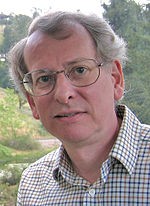- unknown (b.)
Bio/Description
A retired IBM Fellow (1995), a Visiting Professor at the Department of Computer Science at the University of Warwick, he is also a Fellow of the Royal Academy of Engineering (roughly the equivalent of the NAE in the USA), the Institute of Engineering and Technology (formerly IEE), and the British Computer Society. He joined IBM in 1974 as an electronic engineer but is best known as a programmer and writer. He is known for designing and implementing the REXX (Restructured Extended Executor) programming language (published in IBM Systems Journal in 1984) and the NetRexx programming language (1996?1997). Rexx is a structured, high-level programming language designed for ease of learning and reading. Proprietary and open source REXX interpreters exist for a wide range of computing platforms; compilers exist for IBM mainframe computers. It is widely used as a scripting and macro language, and is often used for processing data and text and generating reports; these similarities with Perl mean that Rexx works well in Common Gateway Interface (CGI) programming and it is indeed used for this purpose. Rexx is the primary scripting language in some operating systems, e.g. OS/2, MVS, VM, AmigaOS, and is also used as an internal macro language in some other software, such as KEDIT, THE and the ZOC terminal emulator. Additionally, the Rexx language can be used for scripting and macros in any program that uses Windows Scripting Host ActiveX scripting engines languages (e.g. VBScript and JScript) if one of the Rexx engines is installed. He is also known for his work on color perception and image processing (1982?1985), the STET folding editor (1977), the LEXX live parsing editor (1985 - possibly the first editor with color highlighting) for the Oxford English Dictionary, electronic publishing, SGML applications, PMGlobe, the IBM Jargon file (IBMJARG) through 1990, Java-related languages, the Acorn System 1 simulator, MemoWiki, and decimal arithmetic. He has also contributed to and/or edited numerous computing standards, including ISO (SGML, COBOL, C, C++), BSI (SGML, C), ANSI (REXX), IETF (HTTP 1.0/RFC 1945), W3C (XML Schema), ECMA (JavaScript/ECMAScript, C#, CLI), and IEEE (754 decimal floating-point). In recent years, he has been working on aspects of decimal arithmetic; his proposal for an improved Java BigDecimal class (JSR 13) is now included in Java 5.0, and in 2002, he invented a refinement of Chen?Ho encoding known as densely packed decimal encoding. Cowlishaw's decimal arithmetic specification formed the proposal for the decimal parts of the IEEE 754 standard, as well as being followed by many implementations, such as Python and SAP Netweaver. His decNumber decimal package is also available as open source under several licenses and is now part of GCC, and his proposals for decimal hardware have been adopted by IBM and others. They are integrated into the IBM Power6 and IBM System z10 processor cores, and in numerous IBM software products such as DB2, TPF (in Sabre), WebSphere MQ, operating systems, and C and PL/I compilers. He retired from IBM in March 2010. He has also been a Visiting Professor in the Department of Computer Science, at the University of Warwick in London, England since December 1999. He received his B.Sc. degree in Electrical Engineering from the University of Birmingham in Birmingham, United Kingdom in 1974. In addition to computing, he also is known as a caver. A life member of the NSS, he wrote classic articles in the 1970s and 1980s on battery technology and on the shock strength of caving ropes, and caved in the UK, New England, Spain, and Mexico. He still appears to cave in Spain with Speleogroup and designs LED-based caving lamps, etc. In recent years he learned to fly, and holds a National Private Pilot License (Microlight). He is a member of the Birmingham University Speleological Society and was its President in 1973-74.
-
Gender:
Male -
Noted For:
Designer and implementer of the IBM REXX programming language designed for ease of learning and reading -
Category of Achievement:
-
More Info:


